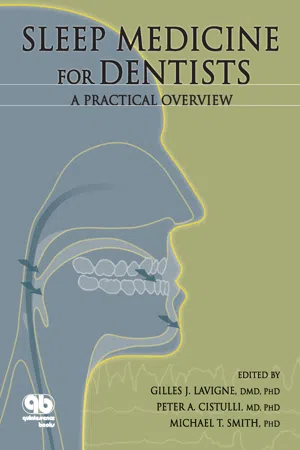![]()
![]()
PATHOPHYSIOLOGIC
CONCEPTUALIZATIONS
OF CHRONIC PAIN
Claudia M. Campbell, PhD
Robert R. Edwards, PhD
Pain has been defined as “an unpleasant sensory and emotional experience associated with actual or potential tissue damage, or described in terms of such damage,” by the International Association for the Study of Pain.1 The quality and characteristics of the pain experience convey valuable information. For example, a well-localized pain (eg, a toothache that does not extend over another trigeminal nerve branch) is a different phenomenon from diffuse pain (eg, fibromyalgia, more recently termed musculoskeletal chronic widespread pain).
Although the sensation of pain is important from an evolutionary standpoint, a warning system signaling injury or further damage, pain can transform a beneficial sensory phenomenon to a pathologic and intractable state known as chronic pain. In such cases, pain is less a symptom than a proper disease of the nervous system. Chronic pain has sometimes been described as pain that persists beyond the expected time of healing, but this definition is unsatisfactory because rates of healing and the factors associated with it are poorly understood. Furthermore, pain disorders are not necessarily linked to specific injuries. Some chronic pain conditions, such as fibromyalgia (widespread pain), myofascial and temporomandibular disorders (TMDs), and irritable bowel syndrome, for example, do not often involve identifiable peripheral insult and are increasingly described as central sensitivity syndromes (see chapter 21).
In a most general sense, chronic pain is sometimes simply described as pain that persists for 3 to 6 months or more. Through this simple descriptive definition, chronic pain has become an epidemic with staggering economic and psychosocial consequences. The financial burden alone is astounding, estimated to cost in excess of US $1 trillion annually in developed countries.2 Recent research surveys on the prevalence of chronic pain among the general population report numbers to vary from 11.0% to as high as 46.5%.3 Chronic pain diminishes quality of life, often causes physical disability,4 and is a serious risk factor for suicide,5 rendering pain management an essential component of medical and dental care. Further, approximately two of three chronic pain patients suffer from comorbid conditions such as clinical insomnia (see chapter 3), mood alteration, and depression, which can be associated with a variety of negative health consequences (see chapter 22).
Although pain is the primary reason individuals seek health care, and dental care in particular,6 few providers are specifically trained in pain management. Dental practitioners are increasingly called on to treat chronic syndromes in which pain is a central component, including facial pain, headache, and TMDs. Given the detrimental impact of pain, including increased mortality rates,7,8 improvement in the understanding of the phenomenon of chronic pain and the identification of groups at high risk for chronic pain are becoming increasingly important.
In this review, some of the mechanisms and processes that underpin the development of chronic pain syndromes are outlined in broad terms and individual differences that potentially contribute to the development, persistence, and exacerbation of chronic pain conditions are discussed, all with a focus on the use of quantitative sensory testing (QST) to assess various aspects of pain perception. For example, a recent prospective study of TMD risk factors suggested that individuals with elevated acute pain sensitivity, revealed by QST (ie, tools and methods to assess pain threshold and tolerance using mechanical, thermal, or chemical pain sensory triggers, as described later in the chapter), may be at greater risk of developing persistent orofacial pain.9 Readers who want more information about orofacial pain are invited to read the recent book by Sessle et al.10
Mechanisms of Persistent Pain
The pain system (nociceptive processing) is composed of ascending and descending systems that function in parallel. Ascending pain transmission is the process that provides the brain with information about potential tissue damage once the cascade of neural signals is set in motion. Peripheral transmission of nociceptive signals occurs via two distinct groups of peripheral fibers, generally termed primary afferent fibers. Cold and well-localized pain sensations are mediated by fast-conducting myelinated A-δ and A-β fibers. Unmyelinated, more slowly conducting C fibers transmit nociceptive signals produced by noxious heat, mechanical stimuli, or by poorly localized stimuli.11 In general, A-δ fibers are thought of as contributing to first-pain sensations, which are often described as “sharp” or “pricking.” In contrast, activation of C fibers tends to produce diffuse “aching” or “burning” sensations. Sensory receptors such as these are common to almost all multicellular animals and work together in shaping the conscious experience of pain.
These ascending signaling systems do not operate in isolation, of course, and they are subject to many local modulatory factors. For example, when tissue damage occurs, an inflammatory response is mounted, with release of factors such as potassium ions, substance P, prostaglandins, histamine, leukotrienes, and bradykinin (see chapter 19). These substances all have the potential to induce changes in peripheral receptors and primary afferent fibers; such alterations include a reduced activation threshold, expansion of receptive fields, generation of spontaneous activity, and recruitment of normally inactive, or silent, nociceptors. These and other similar changes constitute peripheral sensitization, which results in an increased nociceptive signal to the spinal cord.
Peripheral and central sensitization
Peripheral sensitization is the reduced pain threshold (eg, increasing the probability of perceiving pain) brought about by increased responsiveness of peripheral nerve endings, or nociceptors, such as those in skin, muscle, or joints. Most people have experienced this sensation; for example, normally nonpainful touch may become quite painful on sunburned skin. This is termed allodynia (which can be either peripherally driven, centrally driven, or both). Such peripheral sensitization occurs because of the release of inflammatory chemicals and transduction proteins at the site of tissue damage, which in turn alters pain sensitivity through increased responsiveness of the peripheral nociceptors and fibers.
The sustained or repetitive activation of pain fibers associated with chronic pain can be approximated under controlled conditions in the laboratory. It is hypothesized that repetitive activation of pain fibers in states of chronic pain may alter the function and activity of central pain pathways and central processing of sensory information linked to nociception. This process is termed central sensitization. It is produced and maintained by neuromodulators that augment transmitter and receptor activity or efficacy in the spinal cord and brain, producing an enhanced excitability of neurons in the central nervous system (CNS). For example, prolonged afferent nociceptive input induces an increase in N-methyl-D-aspartate activity in the dorsal horn of the spinal cord, induces A-β fibers to establish functional connections with pain pathways in the spinal cord, and induces glial cells to release proinflammatory cytokines throughout the CNS.12
Collectively, the multidimensional process of central sensitization produces hypersensitivity, tenderness, and pain in an enlarged area beyond the site of tissue damage. There is growing evidence that central sensitization plays a role in chronic pain syndromes, including fibromyalgia, widespread musculoskeletal pains, irritable bowel syndrome, and myofascial and TMD pains (see chapter 21).
Ascending and descending influences on nociception and pain
The integration of nociception in the perception of and reaction to pain is dependent on the activation of parallel ascending pathways from spinal cord to the upper brain. The two main pathways are (1) the spinothalamic tracts for sensory processing of nociception, which include various thalamic relays and project to the sensory cortex, and (2) the spinolimbic tracts for emotional assessment of the emotional dimension of the pain experience, which project to the accumbens, amygdala, hypothalamus, insular cortex, cingulate cortex, and frontal cortex. In...


